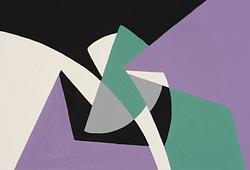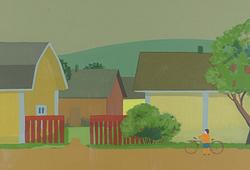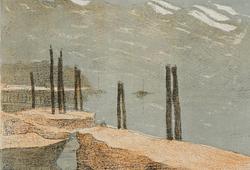Ruti Nemet
"Revisionistic Landscape", 2003
C-print, bildyta 107 x 149 cm.
Proveniens
Dvir Gallery, Tel Aviv. Inköpt 2004 av nuvarande ägare.
Övrig information
Ruti Nemet works in three types of media: painting, photography and sculpture. Nemet's painting, perhaps her primary field, exemplifies processes of resurrection and petrification of images and materials. Her paintings are based in the main on existing photographs, "readymade" images originating in Nature photography. They are driven by an archival urge, but more than that they are the expression of an inward gaze, of hallucination.
Nemet juxtaposes views of dead animals, carcasses, next to portraits of living organisms. The animals, both the dead and the living, are unaware of the fact that they are being represented. The natural scenes in Nemet's painting bring the alien, distant, exotic, and unselfconscious image into confrontation with a densely textured and inviting appearance. Nemet handles her paint as if it were a material rather than color. The paintings are saturated with a dense, plucked, furry surface, which gives the act of painting the semblance of brushing and combing, of the image's being pricked, cracked and wounded, and, in the wake of that, irritated. The painting reacts to Nature, which has become a photographed, dead image, by the repeated execution of the same image and at times the depiction of death. Consequently the image is resurrected, as it were; it flames into a sort of morbid existence, into death amidst life. The first death inflicted by the photograph is cancelled out by the second death in the painting.





























